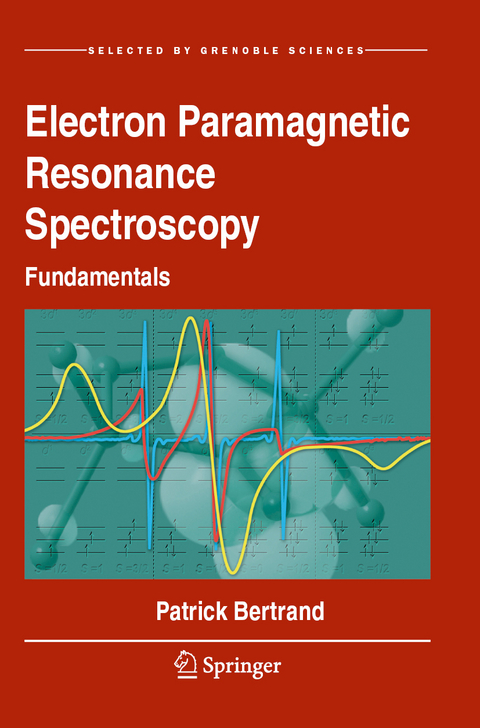
Electron Paramagnetic Resonance Spectroscopy
Springer International Publishing (Verlag)
978-3-030-39665-7 (ISBN)
Patrick Bertrand received his undergraduate education at the Ecole Centrale de Paris. He received his PhD in physics in 1977 and his doctorat es sciences in 1981. Since 1989, he has been a Professor at the Université de Provence, now Aix-Marseille University. He is a well-known specialist in the applications of EPR spectroscopy to the study of electron-transfer proteins and redox enzymes. He is the author of over a hundred publications and several books in this field.
Preface.- Fundamental constants - Units conversion.- The electron paramagnetic resonance phenomenon.- Hyperfine structure of the spectrum in the isotropic regime.- Introduction to the spin states space formalism.- Consequences of the anisotropy of G and A matrices on the shape of spectra given by radicals and transition ions complexes.- Intensity of the spectrum, saturation, spin-lattice relaxation.- Zero field splitting. EPR spectra given by paramagnetic centers with spin greater than ½.- Effect of dipolar and exchange interactions on the EPR spectrum - Biradicals and polynuclear complexes.- EPR spectra given by rare earth and actinide complexes.- Effect of instrumental parameters on the shape and intensity of the spectrum - Introduction to numerical simulation techniques.
"The book targets graduate students and researchers who are interested in acquiring the broad background knowledge needed to interpret the spectra and understand the applications of EPR technique. A set of problems, with hints to solutions, covers a wide range of difficulty." (Christian Brosseau, Optics & Photonics News, osa-opn.org, October 1, 2020)
| Erscheinungsdatum | 05.02.2021 |
|---|---|
| Zusatzinfo | XXIV, 420 p. 2 illus., 1 illus. in color. |
| Verlagsort | Cham |
| Sprache | englisch |
| Maße | 155 x 235 mm |
| Gewicht | 676 g |
| Themenwelt | Naturwissenschaften ► Chemie ► Analytische Chemie |
| Naturwissenschaften ► Chemie ► Physikalische Chemie | |
| Naturwissenschaften ► Physik / Astronomie | |
| Schlagworte | Continuous Wave EPR Spectroscopy • electron paramagnetic resonance spectroscopy • hyperfine structure • Isotropic Regime • Ligand Field Model • Spin States Space • Transition Ion Complexes • Zero-Field Splitting |
| ISBN-10 | 3-030-39665-7 / 3030396657 |
| ISBN-13 | 978-3-030-39665-7 / 9783030396657 |
| Zustand | Neuware |
| Haben Sie eine Frage zum Produkt? |
aus dem Bereich


